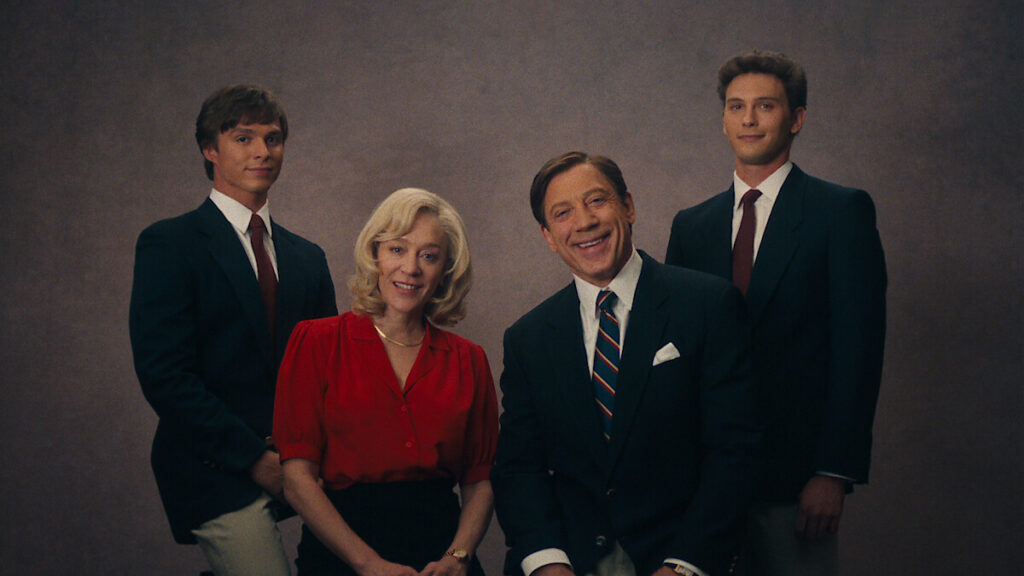menendez brothers: The Menendez Brothers case remains one of the most shocking and high-profile murder cases in American criminal history. In 1989, Lyle and Erik Menendez brutally murdered their wealthy parents, José and Kitty Menendez, in their Beverly Hills mansion.
The gruesome nature of the crime, paired with the drama that unfolded during their trial, captivated the nation and continues to be a topic of discussion decades later. The Menendez Brothers have become synonymous with family betrayal, psychological trauma, and the darker side of wealth and privilege.

The Night of the Murders
On the night of August 20, 1989, the Menendez Brothers shot their parents multiple times with shotguns, leaving their bodies mutilated. José Menendez, a successful Hollywood executive, and his wife Kitty were found sprawled out in their living room, with no apparent signs of struggle.
The brothers initially claimed they had returned home from a movie and found their parents dead, but this alibi quickly unraveled.
Their calm and composed demeanor following the murders raised suspicions. Instead of mourning their parents, they embarked on a lavish spending spree, buying luxury items such as Rolex watches, sports cars, and designer clothes.
Erik, an aspiring tennis player, even hired a tennis coach for private lessons. These actions began to raise red flags with law enforcement, leading investigators to look more closely at the brothers as suspects.
The Trial of the Menendez Brothers
The trial of the Menendez Brothers was a media sensation, drawing massive attention across the United States. The brothers’ defense team argued that they had suffered years of emotional, physical, and sexual abuse at the hands of their father. Lyle and Erik testified that the abuse had driven them to fear for their lives, claiming that the murder of their parents was an act of self-defense.
During the trial, the Menendez brothers described their father as a controlling and abusive man, while painting their mother as negligent and complicit. Their defense team sought to portray them as victims of extreme trauma, hoping to gain the jury’s sympathy.
The prosecution, however, argued that the brothers were motivated by greed. José Menendez had accumulated a fortune worth millions, and the prosecution contended that Lyle and Erik were simply after their parents’ money. This claim was supported by the brothers’ extravagant behavior in the weeks following the murder, as they spent lavishly on cars, vacations, and other luxuries.
The trial was one of the first to be televised, and it gripped viewers with its dramatic revelations. It became a symbol of the dark underbelly of American wealth, power, and familial dysfunction.
The First Trials and Hung Juries
In 1993, the Menendez Brothers faced two separate trials. The first trial ended in a hung jury, with some jurors sympathetic to the brothers’ claims of abuse. The split in opinion reflected the conflicting narratives at the heart of the case: Were the Menendez brothers calculating murderers, or were they emotionally scarred victims of parental abuse who snapped under pressure?
The case became even more sensational as it was televised, allowing the public to become deeply invested in the lives of the Menendez Brothers. The media portrayed them as privileged young men who had committed an unforgivable crime, but some people saw them as tragic figures who had suffered unimaginable abuse at the hands of their parents.
The Second Trial and Life Sentences
The second trial took place in 1996, but this time, the court barred much of the defense’s claims of sexual abuse. With the focus now shifting primarily on the brothers’ premeditation and greed, the jury was less sympathetic.
In March 1996, both Lyle and Erik were convicted of first-degree murder and conspiracy to commit murder. They were sentenced to life in prison without the possibility of parole.
Despite numerous appeals, the Menendez Brothers remain incarcerated. They are housed in separate prisons, and their case continues to evoke debates on whether justice was truly served. Some believe that the brothers were victims of abuse and acted out of a warped sense of survival. Others maintain that they were motivated purely by financial gain, seeking to inherit their parents’ wealth.
Legacy and Cultural Impact
The Menendez Brothers case has left an indelible mark on American pop culture. Over the years, the case has been explored in documentaries, books, and even TV shows. In 2017, the brothers’ story was revisited in the television series Law & Order True Crime: The Menendez Murders, which reignited public interest in the case.
The trial also set a precedent for the media’s role in covering high-profile criminal cases. It was one of the earliest cases to be broadcast on Court TV, paving the way for later cases like the O.J. Simpson trial to receive extensive live coverage.
The Menendez Brothers have also become a focal point in discussions about child abuse, mental health, and the justice system. Their case highlights the complexity of human behavior, particularly when familial abuse is involved. Did the trauma they allegedly endured justify their actions, or was it merely an excuse to escape punishment for a cold-blooded crime?
Conclusion
The Menendez Brothers case remains one of the most infamous and debated criminal cases in modern American history. The murders of José and Kitty Menendez by their own sons continue to raise questions about the nature of abuse, privilege, and justice. While the brothers are serving life sentences, the fascination with their story endures.
The Menendez Brothers represent a tragic tale of family dysfunction and the deadly consequences of unresolved trauma. Whether viewed as victims or villains, their story is a chilling reminder of how twisted family dynamics can lead to unimaginable horror.
